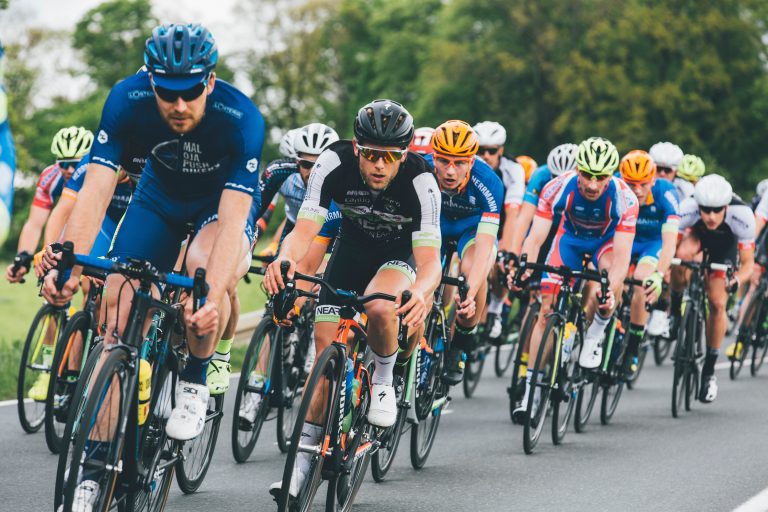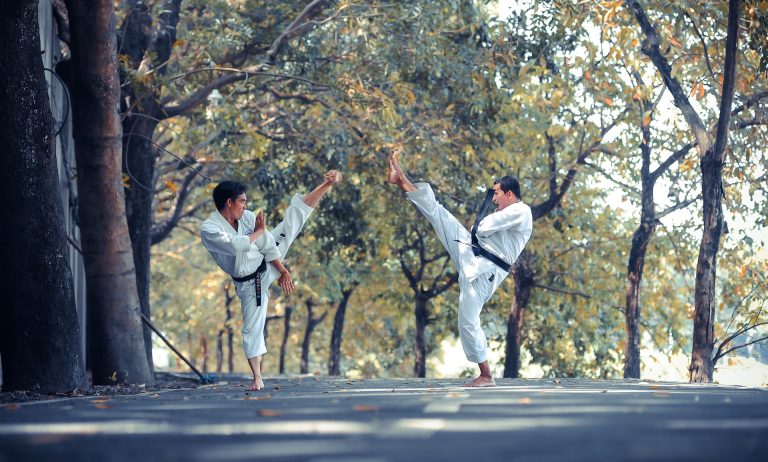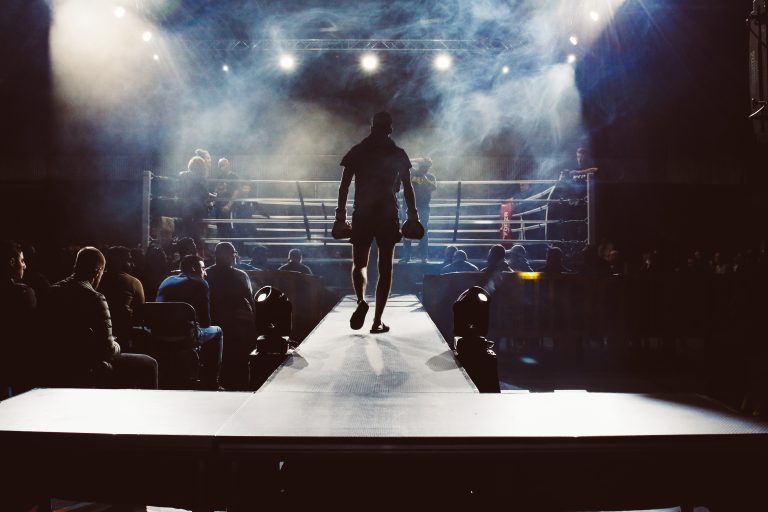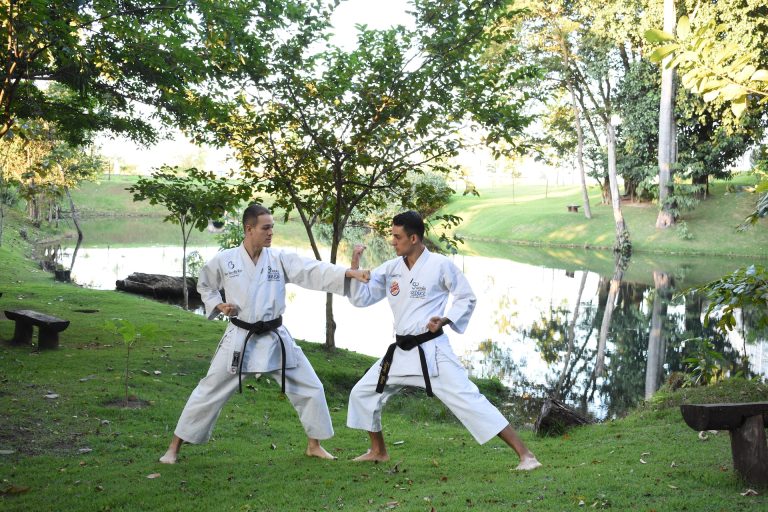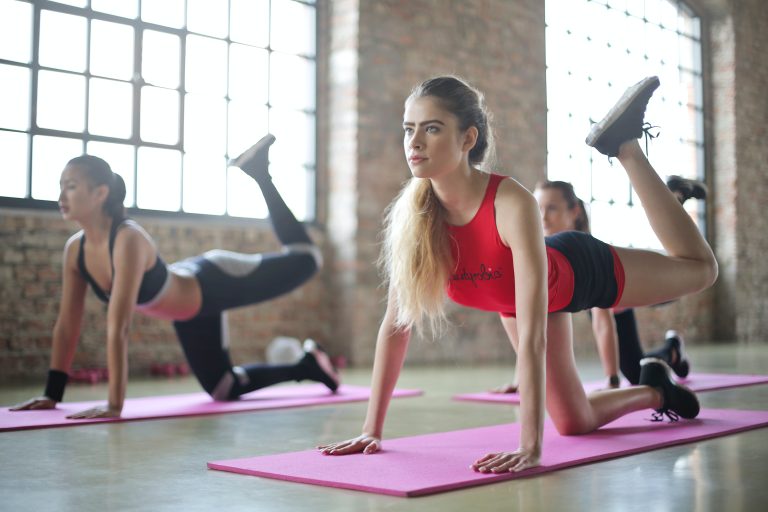Does Karate Work in Real Life? An In-depth Analysis
Karate is a martial art that originated in Okinawa, Japan. It has become a popular form of self-defense and physical fitness in many parts of the world. While it is often portrayed in movies and TV shows as a deadly fighting style, many people question if it actually works in real life scenarios. In this blog post, we will explore the effectiveness of karate in real-life situations.
The Basics of Karate
Karate emphasizes striking techniques, such as punches, kicks, and knee strikes. It also includes joint locks, throws, and grappling techniques. Karate training involves both physical and mental conditioning, focusing on speed, power, and agility. To be effective in karate, you need to develop strength, flexibility, and endurance.
Karate vs. Real-Life Situations
In a real-life situation, you may face an attacker who is armed with a weapon, or who is significantly larger and stronger than you. This raises the question: can karate techniques effectively defend against a real-life attacker?
The answer is yes, and no. The effectiveness of karate ultimately depends on various factors, such as the skill of the practitioner, the severity of the attack, and the specific techniques used.
In general, karate can be used effectively in close-quarters combat situations to quickly incapacitate an attacker. Strikes and kicks to vital areas, such as the groin, eyes, nose, and throat, can be devastatingly effective. Additionally, joint locks and grappling techniques can be used to restrain and control an attacker.
However, karate may not be as effective against an attacker who is armed, as it does not focus on disarming techniques. Karate also may not work as well against multiple attackers, as it relies on quick and powerful strikes, which may leave the practitioner vulnerable to other attackers.
The Importance of Training and Practice
Regardless of the situation, the effectiveness of karate relies heavily on the training and practice of the practitioner. Like any martial art, the effectiveness of karate techniques depends on the skill of the practitioner, which is developed through regular training and practice.
Karate practitioners must learn to apply their techniques quickly and decisively, without hesitation, and under duress. This requires not only physical training, but also mental preparation and discipline. Additionally, sparring with live opponents is essential to developing practical and effective techniques.
Introduction: Karate and Its Effectiveness in Real Life Situations
Karate, a martial art originating from Okinawa, Japan, has gained popularity worldwide due to its various health and fitness benefits, as well as its practical self-defense applications. However, the question remains: does karate work in real life situations? This question has been asked frequently by people who are considering taking up karate as a form of self-defense. In this blog post, we will address some of the most common questions related to the effectiveness of karate in real-life scenarios.
Q1: Is Karate Effective in Real Life Situations?
Yes, karate is effective in real-life situations, provided that it is taught and practiced correctly. Karate is designed to be a practical form of self-defense that utilizes strikes, kicks, and blocks to neutralize an attacker. With proper training, practitioners can learn how to effectively defend themselves against a variety of attacks, including punches, kicks, and grabs.
Additionally, karate training can improve one’s physical fitness, mental discipline, and self-confidence, which can all be useful in real-life confrontations. However, it is essential to note that, like any martial art, karate has its limitations and may not be effective in every situation. Therefore, it is crucial to learn from a qualified instructor who can help students understand the limitations and strengths of this martial art.
Q2: Can Karate be Used Against Multiple Attackers?
Karate can be used against multiple attackers, but it is not recommended as it can be challenging to defend oneself against multiple opponents. In such a situation, it may be better to focus on escaping rather than fighting. However, practicing karate can help improve situational awareness, providing individuals with the ability to spot and avoid potential threats.
It is also essential to note that all martial arts, including karate, teach the importance of avoiding fights whenever possible. Therefore, if confronted by multiple attackers, the best course of action is to seek assistance from law enforcement or other individuals nearby.
Q3: Do Karate Techniques Work Against Weapons Such as Knives or Guns?
Karate techniques can be effective against weapons, but it is highly recommended to avoid any confrontation involving weapons. Engaging with an armed attacker significantly increases the risk of injury or death. Additionally, disarming an attacker or using martial arts techniques against weapons require a high level of skill and training that is beyond the scope of regular karate practice.
It is essential to note that the best way to defend oneself against an armed attacker is to comply and give up personal belongings, ultimately protecting one’s life. Proper training also teaches practitioners to be aware of their surroundings, identify potential threats, and avoid dangerous situations.
Q4: How Long Does it Take to Become Proficient in Karate?
The time required to become proficient in karate varies depending on the individual’s dedication, natural ability, and frequency of training. Practitioners can see results within a few weeks, with visible improvement in flexibility, strength, and endurance. However, to become proficient in karate, it takes several years of consistent training and practice.
It is essential to remember that karate is a journey rather than a destination. A practitioner’s improvement never ends, and there is still much to learn even at the highest level. With regular practice and guidance from a qualified instructor, individuals can continue to improve their skills and reach higher levels of proficiency.
Q5: How Can I Choose a Reliable Karate Instructor and School?
Choosing a reliable karate instructor and school is crucial to ensure proper training and education on the martial art. When researching potential instructors and schools, consider the following:
- Qualifications: Look for instructors who have a recognized certification or teach at an established organization.
- Teaching style: Different instructors have different teaching styles, find one that suits your needs best.
- Safety Measures: Ensure that the school put safety measures such as protective gear and safe training protocols.
- Cost of Training: Compare the training fees with other schools to ensure they are affordable without compromising the quality of training.
How to Use Karate Techniques in Real-Life Self Defense
Karate is a popular martial art that has been practiced all over the world for decades. It is a form of self-defense that emphasizes quick strikes, strong stances, and evasion techniques to defeat an opponent. Many martial artists and practitioners wonder how effective karate is in real life scenarios, and whether the techniques they learn in the dojo can be applied in a real fight. In this post, we will discuss how to use karate techniques in real-life self-defense situations.
Step 1: Master the Basics of Karate
Before attempting to use karate techniques in self-defense situations, you must first master the basics. This includes learning proper stances, punches, kicks, and blocks. Practice these techniques regularly, both individually and in combinations, to develop muscle memory and improve your ability to execute these techniques quickly and efficiently.
Step 2: Study and Understand the Mechanics of Self-Defense
Self-defense is not just about striking your attacker; it is about understanding the entire process of dealing with an attack. This includes understanding the potential dangers in any given situation, identifying the attacker’s weaknesses, and being able to predict their movements.
Step 3: Train with a Partner or Instructor
The best way to prepare for real-life self-defense situations is to train with a partner or instructor. This allows you to practice your techniques and get feedback on your performance. Your partner or instructor can also simulate real-life scenarios, allowing you to learn how to react in different situations.
Step 4: Know Your Limits
One of the most important aspects of self-defense is knowing your own limits. You should never attempt to engage in a fight that you cannot win or use techniques that you are not skilled in. Make sure to assess the situation before taking any action and always have an exit strategy.
Step 5: Stay Calm and Confident
In a real-life self-defense situation, it is important to remain calm and confident. This means controlling your emotions and being able to think rationally under pressure. By remaining calm, you can avoid escalating the situation and make more calculated decisions.
Step 6: Use Strikes and Blocks Effectively
One of the most effective ways to use karate techniques in real-life self-defense situations is to strike and block effectively. Strikes can be used to inflict damage on your attacker, while blocks can be used to deflect incoming attacks. Make sure to target vulnerable areas on your attacker, such as the groin, eyes, or throat.
Step 7: Be Prepared to Defend Yourself Against Multiple Attackers
Real-life self-defense situations may involve multiple attackers, so it is important to be prepared to defend yourself against a group. This may involve using evasive techniques to avoid being surrounded, and focusing your strikes and blocks on one or two attackers at a time.
In conclusion, karate techniques can be effective in real-life self-defense situations, but only if you have the proper training and mindset. By following these steps and practicing regularly, you can improve your ability to use karate techniques in a real fight and increase your chances of defending yourself against an attacker. Remember to always prioritize your own safety and be aware of your own limitations.
Inhaltsverzeichnis

